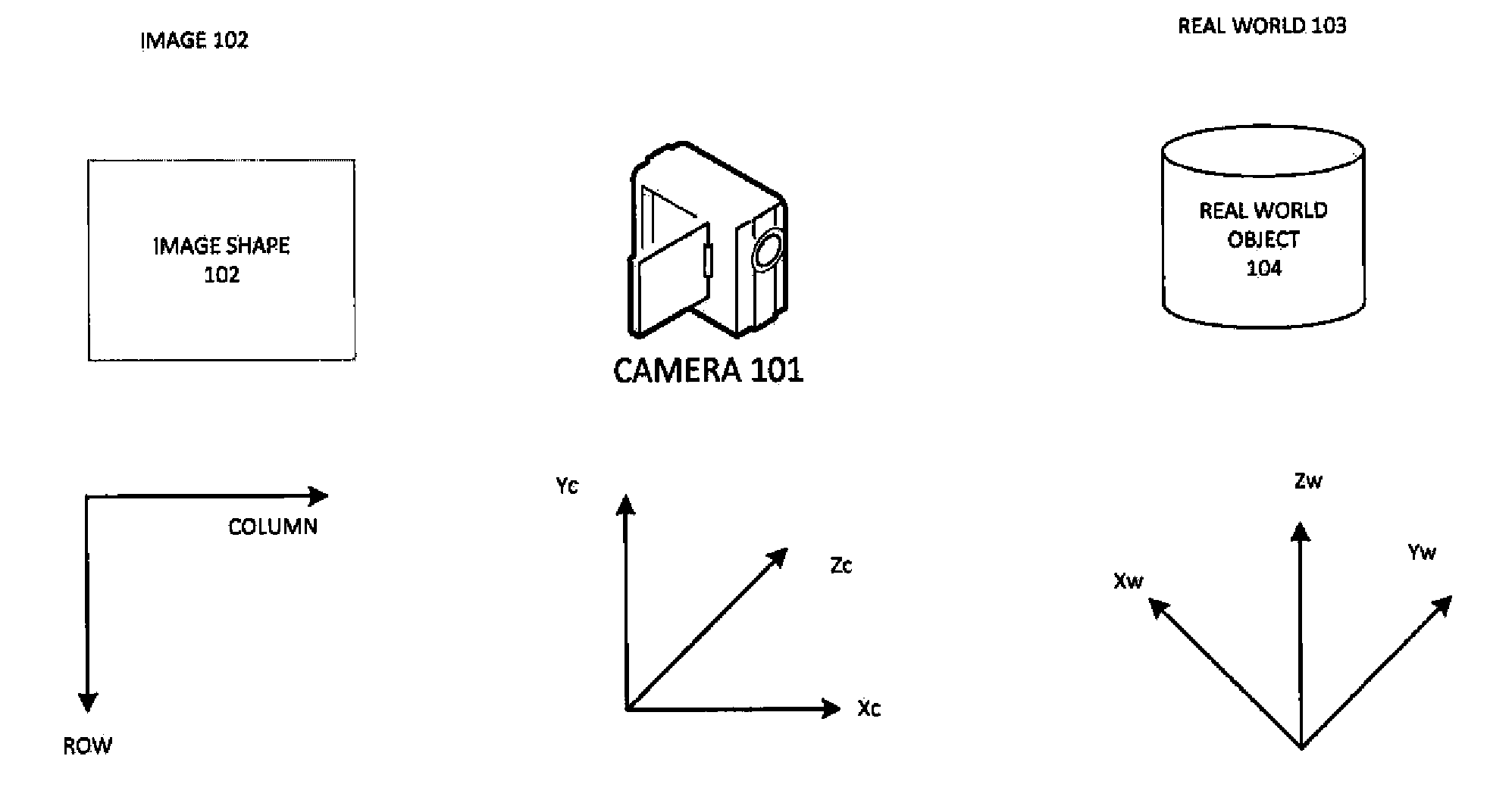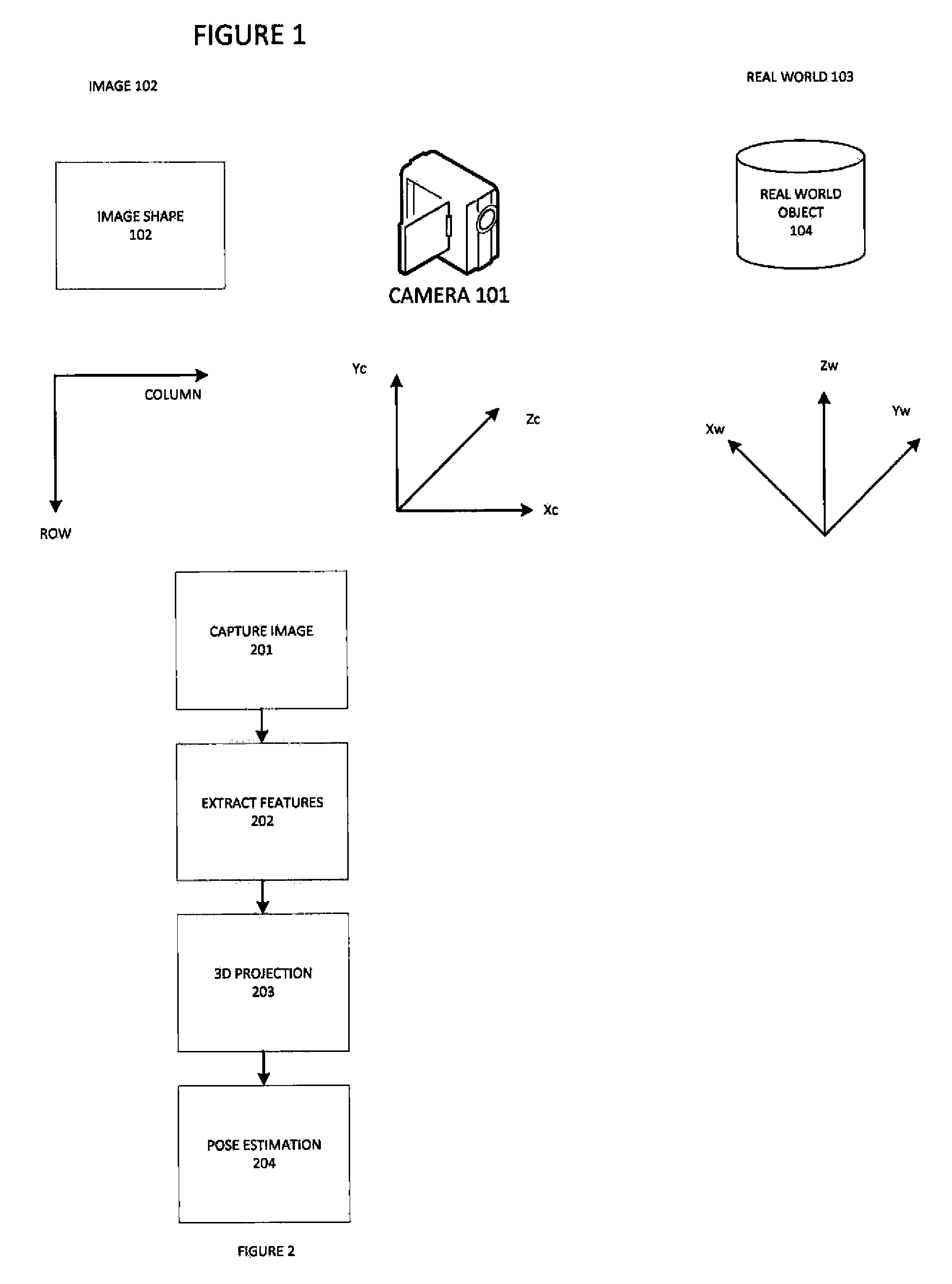Systems and methods for 3D pose estimation
a technology of system and method, applied in the field of systems and methods for 3d pose estimation, can solve the problems of limited usability of application, inability to deal with significant illumination changes, and inability to use direct methods
- Summary
- Abstract
- Description
- Claims
- Application Information
AI Technical Summary
Benefits of technology
Problems solved by technology
Method used
Image
Examples
Embodiment Construction
[0022]The present system is a method of 3D pose estimation of an object using 3D modelling of an approximation of the object. The approximation may be parametric or non-parametric as desired.
[0023]The system is implemented by an acquisition system (e.g. camera) capturing an image (2D image plane) of an object in the 3D world. Each of these actors has its own coordinate system as illustrated in FIG. 1. Referring now to FIG. 1 we see the camera 101 creating an image 102 from an object 104 in the real world 103. The image 102 is a 2D image plane comprised of pixels and having a coordinate system having an origin 0,0 at the upper left in one embodiment, with rows 105 and columns 106 defining an image frame.
[0024]The camera 101 is a video camera in one embodiment and operates in 3D space with 6DOF in the Xc, Yc, Zc coordinate system. The object of interest 104 is in the 3D real world and has a coordinate system in the Xw, Yw, Zw coordinate system. The camera and real world coordinate sys...
PUM
 Login to View More
Login to View More Abstract
Description
Claims
Application Information
 Login to View More
Login to View More - R&D
- Intellectual Property
- Life Sciences
- Materials
- Tech Scout
- Unparalleled Data Quality
- Higher Quality Content
- 60% Fewer Hallucinations
Browse by: Latest US Patents, China's latest patents, Technical Efficacy Thesaurus, Application Domain, Technology Topic, Popular Technical Reports.
© 2025 PatSnap. All rights reserved.Legal|Privacy policy|Modern Slavery Act Transparency Statement|Sitemap|About US| Contact US: help@patsnap.com



